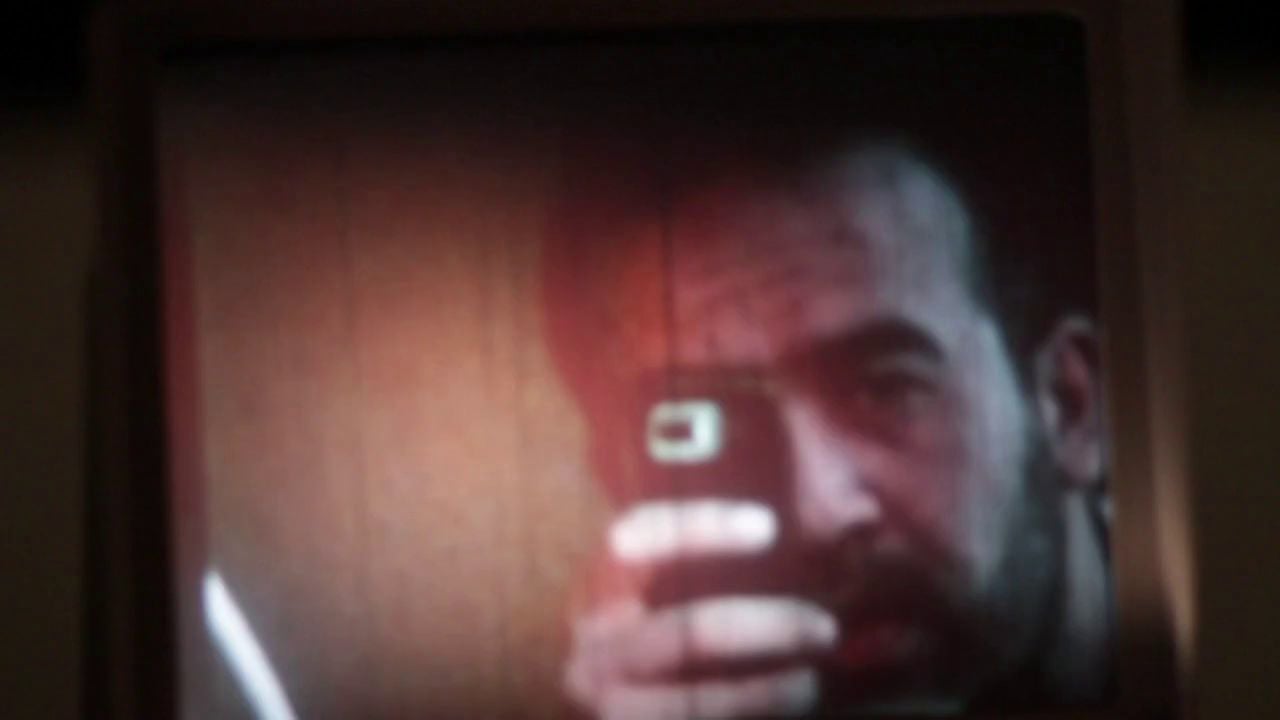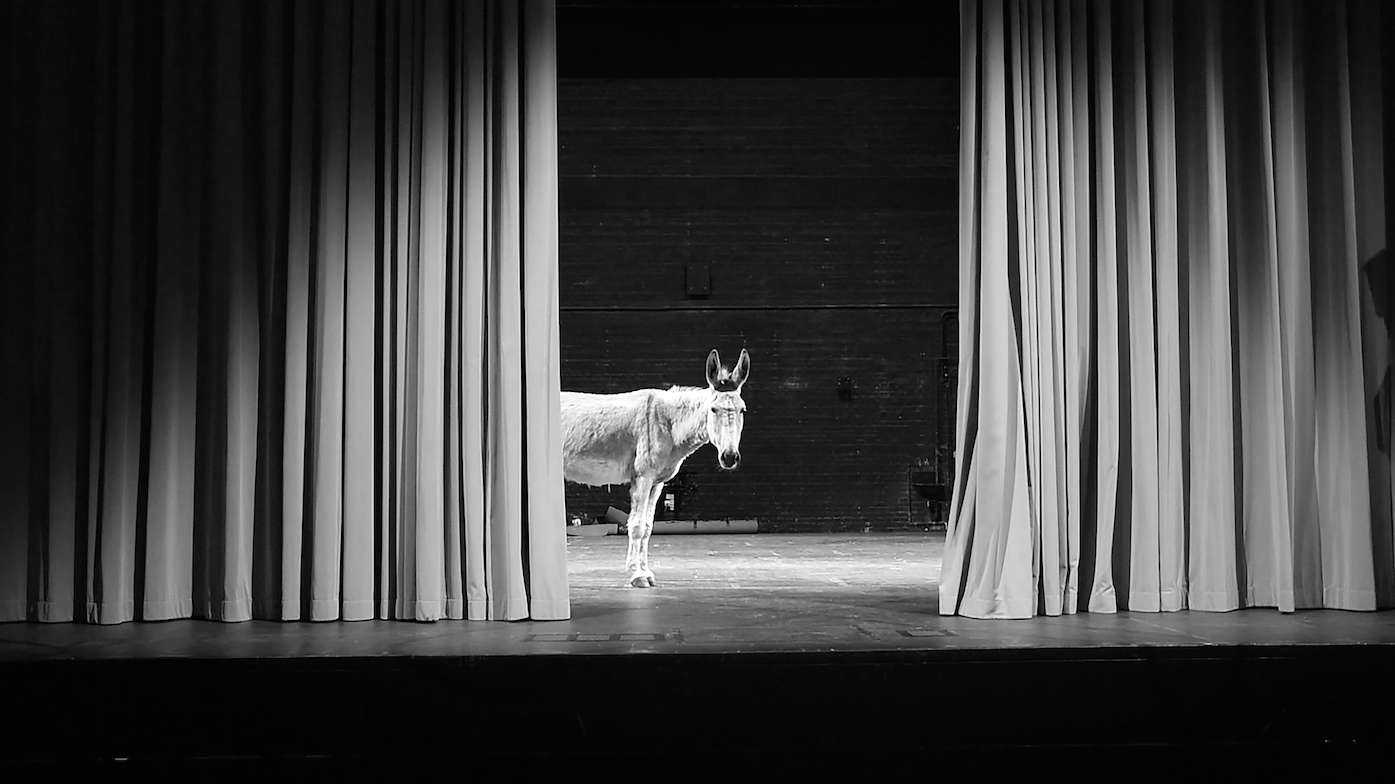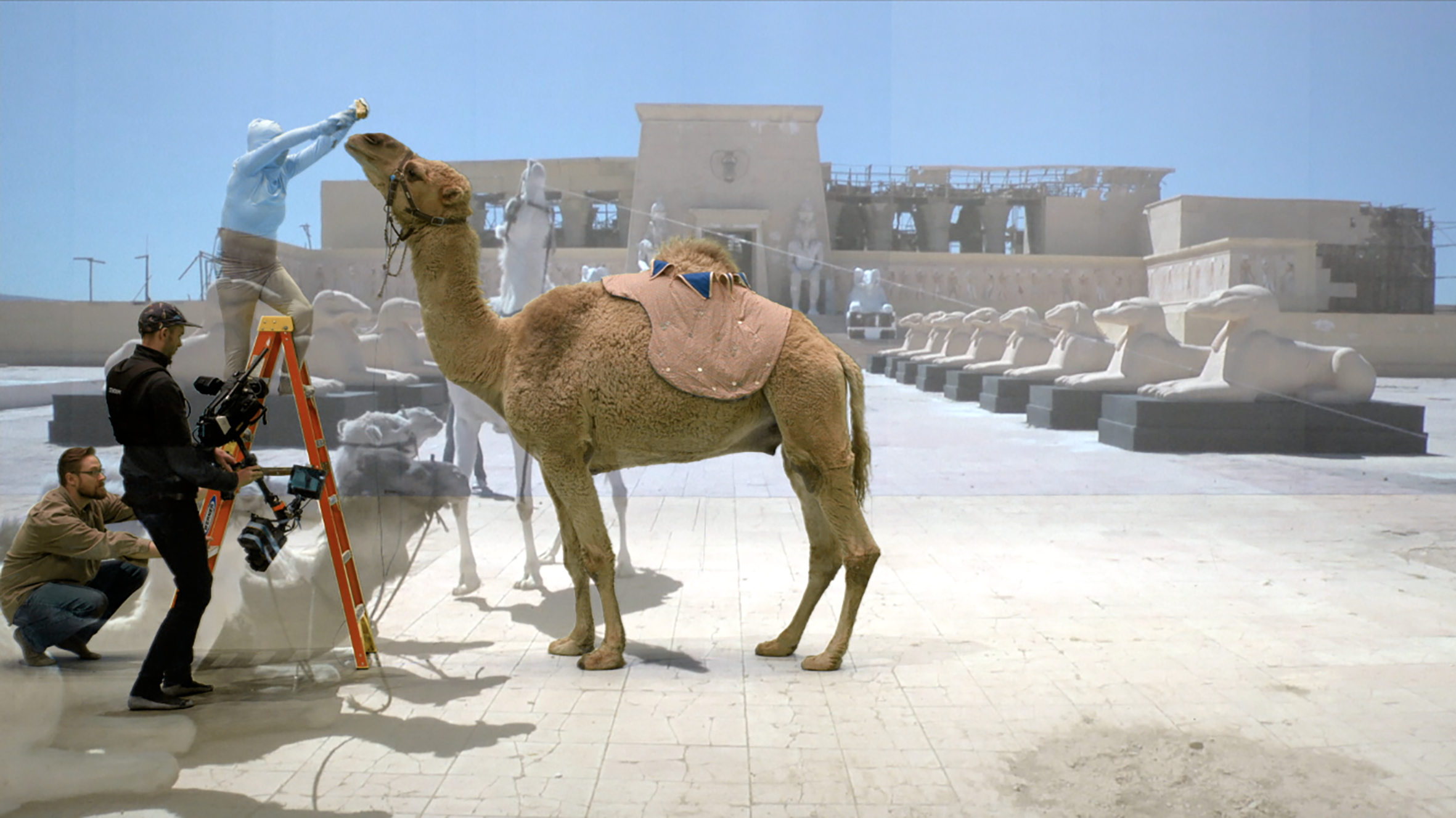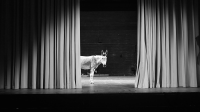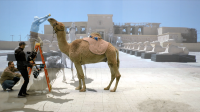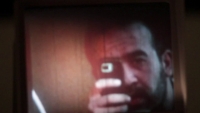Atlas/insights (2016)
In February 2017, Andros Zins-Browne presents the European premiere of Atlas Revisited, a performance made in collaboration with visual artist Karthik Pandian.
The Pixelated Revolution by Rabih Mroué shows a Syrian man who, using his phone, films his own death by a sniper. A Levi's ad restages a May Day protest in Berlin to promote its jeans. The Uprising by Peter Snowden uses documentary footage from the Arab Spring to create a fictional narrative of an imaginary revolution. What are the new revolutionary potentials and unforeseen pitfalls of these devices we carry around with us every day? A screening and discussion with Maher Hamoud (writer, journalist on Middle Eastern politics, Chief editor of Propaganda Monitor), Peter Snowdon (Filmmaker, The Uprising), and Michiel Vandevelde (Choreographer, Antithesis, the Future of the Image). With a screening of work by James T. Green and a video lecture by theatre director and artist, Rabih Mroué (The Pixelated Revolution). Moderated by Andros Zins-Browne
Rabih Mroué (°1967) lives and works in Beyrouth. Mroué is an actor, director, playwright, visual artist, and a contributing editor for The Drama Review (TDR) and the quarterly Kalamon. He is also a co-founder and a board member of the Beyrouth Art Center (BAC), Beyrouth. Employing both fiction and in-depth analysis as tools for engaging with his immediate reality, his works deal with issues that have been swept under the rug in the current political climate of Lebanon, connected to the enduring marks left by the Lebanese Civil War as well as more recent political events like the Arabic Spring and the Syrian Revolution. Peter Snowdon (°1964) is a filmmaker and researcher, currently based in Glasgow. His film and video work combines a documentary process with formal experimentation. His short films are distributed by the Collectif Jeune Cinéma (Paris) and have been widely shown at festivals. His first feature-length film, The Uprising (Rien à voir production/Third Films), débuted at the Jihlava International Documentary Film Festival in 2013, where it won the Opus Bonum award for best world documentary. It has since played at over 20 festivals and won several more prizes. James T. Green (°1989) is a conceptual artist, designer, developer, podcaster, educator, and writer based in Chicago, Illinois, U.S.A. His art practice builds upon an interest in how we interact between one another within our culture. Through object making, performance, and video, his work gravitates towards our relationship with technology and navigating life through the black experience. His projects investigate information distribution on the internet and unspoken markers of identity. He has co-founded and maintains two businesses: On The Firefly, a design and development consultancy, and Postloudness, a collective of audio shows by people of colour, women, and queer identified hosts. He has had exhibitions at EXPO Chicago, the Chicago Cultural Center, and Gene Siskel Film Center Chicago, IL; Massachusetts Museum of Contemporary Art, North Adams; and University of Chicago Arts & Public Life/CSRPC program, Chicago, IL. Michiel Vandevelde (°1990) began his dance career at an early age with the Leuven-based company fABULEUS. Since graduating from P.A.R.T.S. in 2012 he has been building up his own practice as a choreographer, curator, and writer. His work includes small actions in public space, performances, and building structures, searching for alternative political and social systems. He is a member of the Bâtard festival's artistic team and of the editorial team of Etcetera (a performing arts magazine). From 2017 to 2021 Michiel Vandevelde will be artist in residence at Kaaitheater.
Philosopher and animal theorist Fahim Amir has written and lectured extensively on animals. He writes about Ghost-Cows, sees Pigeons as 'Angels of Fordism,' and Pigs as 'Animals of Resistance'. By unearthing a trove of rare historical accounts, urban myths, and art-historical references, Amir's inquiries have lead to new insights into the ways in which animals shape our urban landscapes, transform our technological capacities, and influence new forms of subjectivity. In this performative lecture, Amir combines storytelling with humour to bring beasts to the foreground of human history. With an ongoing screening by David Weber-Krebbs(theatre director, Balthazar) and Krõõt Juurak (Performances for Pets).
Krõõt Juurak (°1981) born in Tallinn, is a choreographer and performer whose work (performances, presentations, texts, workshops, mood shifts) challenges fixed definitions of choreography and performance. Krõõt Juurak and Alex Bailey have been dealing with performances for pets since 2014. In addition to exploring our companion species’ tastes and humour, the project also addresses the fact that entertainment provided by pets working from home is often not recognised as actual work. She has presented her work in a variety of forms at venues including Mindaugas Triennial, Contemporary Art Center (CAC) (Villnius, 2012); ImPulsTanz Vienna (2012); de Appel (Amsterdam, 2012, 2014); CIAP Hasselt (Belgium, 2011); Künstlerhaus Büchsenhausen (Innsbruck, 2010); Kunsthalle Wien project space Karlsplatz (Vienna, 2010); Tallinn Art Hall (2009); and deSingel (Antwerp, 2008); a.o. David Weber-Krebs (°1974) is a Belgian/German artist and a researcher based in Brussels. He studied at the University of Fribourg in Switzerland and the Amsterdam School of the Arts in the Netherlands. David explores various contexts as a basis for an experimental process, which questions the traditional relationship between the work of art and its public. Recent works are the performances Tonight, lights out! (2011/2013), Balthazar (2013) with Maximilian Haas, Into the big world (2014), and the installation Immersion (2014) at the Weltkulturen Museum, Frankfurt.
ANIMATING FREEDOM What strategies are contemporary artists who make images developing in order to speak about this increasingly invisible world? How does it shift not only the content but the form of their work? Recent examples such as the world’s first ‘Hologram Protest’ in Madrid in April, 2015 and the documentary video, Serious Games by Harun Farocki, about the use of Virtual Reality not only for training but also to treat post-combat trauma in US soldiers, suggest that virtual technologies might propose illusive, immaterial tools with which to address, or escape from- illusive political circumstances.
Michael Bell-Smith (°1978) is a contemporary artist who lives and works in Brooklyn, New York. Bell-Smith's work utilizes digital forms to explore the use of popular technologies in contemporary visual culture. Bell-Smith received a Bachelor of Arts degree in Semiotics from Brown University in 2001. His work has been exhibited internationally, including The New Museum, New York; Foxy Production, New York; Hirshhorn Museum and Sculpture Garden, Washington, D.C.; The Museum of Modern Art, New York; Roslyn Oxley9 Gallery, Sydney, Australia; LISTE, Basel, Switzerland; The Museum of Fine Arts, Lausanne, Switzerland; Vilma Gold, London; BankART, Yokohama, Japan; Glassbox, Paris; PROJEKT 0047, Berlin; and Tate Liverpool, Liverpool, UK. Harun Farocki (°1944-2014) was born in German-annexed Czechoslovakia. Farocki made close to 120 films, including feature films, essay films and documentaries. He worked in collaboration with other filmmakers as a scriptwriter, actor and producer. His work has shown in many national and international exhibitions and installations in galleries and museums. Hassan Khan (°1975), born in the UK, now lives and works in Cairo. Using choreography, music, performance, sound, and video, as well as writing, Hassan Khan draws on personal experience to construct narratives around his home city’s events, features, and individuals. Key to his practice is a fusion of his internal consciousness with external address; he is interested in examining philosophical, political, and social tendencies as they become locally influential. Selected solo shows include Beirut Art Center, MMK, Frankfurt, Kunsthalle Sao Paolo, Objectif, Antwerp. Khan has also participated in group shows at the Guggenheim, New York, Sharjah Art Foundation, United Arab Emirates, The Liverpool Biennial, Palais De Tokyo, Paris and dOCUMENTA (13). As a musician he has composed soundtracks for theater and performed his own compositions in Amsterdam, Istanbul, London, and Paris. Khan is also published widely in both Arabic and English. Karthik Pandian (°1981) is an American artist working with moving image and sculpture. His process is defined by a particular approach to vision: how to recognize the play of time, labor, and meaning in things. He transforms material and arranges seemingly disparate objects to render that play more visible. Pandian has held solo exhibitions at The Whitney Museum of American Art, New York; Bétonsalon, Paris; Midway Contemporary Art, Minneapolis and White Flag Projects, St. Louis amongst others. His work was featured in the inaugural LA Biennial at the Hammer Museum and La Triennale: Intense Proximity at the Palais de Tokyo, Paris as well as in group exhibitions such as Film as Sculpture at Wiels Contemporary Art Centre, Brussels, Repertory at the Palazzo Cavour, Torino and the 4th Marrakech Biennale. Rachel Rose (°1986) investigates subjects ranging from zoos and cryogenics, the American Revolutionary War and 19th-century park design, Philip Johnson’s Glass House, EDM concerts and the sensory experience of walking in outer space. Through the juxtaposition of seemingly unrelated events, Rose’s work presents humanity’s shared current anxieties and their multi-layered interconnectivity around our own mortality now. Recent solo exhibitions include: Rachel Rose at The Aspen Art Museum, Aspen; “Everything and More” at The Whitney Museum of American Art, New York (2015); “Palisades” at the Serpentine Sackler Gallery, London (2015); “Interiors”, Castello di Rivoli, Turin (2015). Forthcoming exhibitions include Pilar Corrias Gallery, London (2016); Museu Serralves, Porto (2016); the Hayward Gallery, London(2016); and the São Paulo Biennial, São Paulo (2016). |
